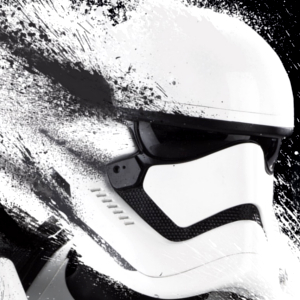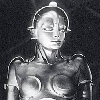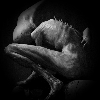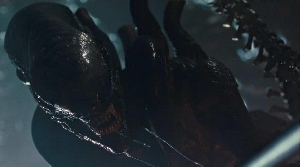Forum Topic

Gavin
MemberTrilobiteJune 12, 2012There seem to be a lot of scientifically minded members on these forums therefore I am inviting them, and any other members that genuinely which to participate in this discussion (which will probably get heavy, forewarned is forearmed) into this thread to discuss my "Maverick" scientific theory.
Rather than post the entire theory in one big long, tedious and complex post I will begin with the following points present in my theory...
1. Our solar system was NOT born by the process described in [url=http://en.wikipedia.org/wiki/Accretion_theory]Accretion theory[/url].
2. Our planet, solar system, galaxy and universe are [url=http://en.wikipedia.org/wiki/Age_of_the_universe]older[/url] than people think.
3. The [url=http://en.wikipedia.org/wiki/Big_Bang]Big Bang theory[/url] is "partially" wrong.
[u]The Facts[/u]
With that lot out of the way, now to parts of the actual theory itself...
1. The Earth, and all of the planets in our solar syatem are "extremely" slowly moving away from the sun.
2. All the planets in our solar system are orbiting around the sun in the same direction (revolution)...
[img]http://upload.wikimedia.org/wikipedia/commons/thumb/0/0d/Ecliptic_plane_3d_view.gif/220px-Ecliptic_plane_3d_view.gif[/img]
[img]http://upload.wikimedia.org/wikipedia/commons/thumb/0/08/Solarsystem3DJupiter.gif/220px-Solarsystem3DJupiter.gif[/img]
3. Which is also the same direction they are all (except Uranus and Venus) and the sun spinning on their own axis (rotation).
These 3 points are observable/proven FACTS, that disprove Accretion theory and through logic, deduction, reason and common sense open up an unexpected can of worms.
But before disclosing it to you, lets see if you can see what I see from these 3 observable/proven FACTS.
[u]Part One - The Small Picture[/u]
The Accretion Theory, in summary has two major flaws...
1. The composition of the outer planets Jupiter, Saturn, Uranus and Neptune
2. The existence of only two "belts" - the asteroid belt and the kuiper belt.
If, according to Accretion theory our solar system was born from a cloud of dust, which through the process of accretion resulted in the 8 planets then how can the 4 outer planets be entirely composed of gas. And in relation to point 2, wouldn't there be more belts of debris left over from this process. Logically it just doesn't sit right.
I've teased you this point with observable and known facts (see above), and some of you may or may not have deduced were this initial part is heading. So rather than continuing to tease you I will reveal the first part of the theory...
...all the planets in our solar system were born from the sun...
[b]Stage 1[/b]
Billions of years ago our Sun ejected, or rather vomited, a small amount of its molten surface. Because of the Sun's rotation (and revolution - more of that in part two), gravity and the force of which "glob" was ejected it was held in orbit (revolution) around the Sun. The shape of this "Glob" became spherical beacuse of the aforementioned forces acting upon it, and because of the vast coldness of space the outer layer hardened into a crust. Being so close to the Sun, and because of its molten core, this small "glob's" crust would frequently crack emitting gases which would then be held within what is known as an exosphere.
Yes, you guessed it... Mercury is stage 1
It should be obvious now where this is heading for those of you that follow this thread so I'll summarise...
[b]Stage 2-4[/b]
As the stage 1 planet drifts further away from the Sun, it swells emitting more gases, that accumulate into an atmosphere, which helps "normalize" the temperature of the planets surface. This is stage 2 - Venus.
As the surface becomes hospitable and with the production of an ozone layer and liquid water, the planet becomes habitable. This is stage 3 - Earth.
With the gradual build of carbon dioxide and the gradual deteriation of the ozone layer liquid water is evaporated and/or frozen beneath the planets surface, which itself becomes barren and lifeless. This is stage 4 - Mars.
[b]Stage 5[/b]
No planet in our solar system is stage 5. Why? because stage 5 is more of an event than an actual stage...
With a barren, lifeless and volcanic and tectonicially dormant surface a stage 4 planet is dangerous. Underneath Mars' crust it is just like that of Earth - molten, hot and violent. But because the surface of Mars is dormant this heat and energy has no means to escape. Using the analogy of a balloon, Earth is like a balloon filled with many needle holes - with the right amount of air used to constantly fill the balloon it would retain its inflated shape, but Mars is a balloon with on holes, no means of escape - blow too much air into a balloon, what happens? That is stage 5.
[b]Stage 6[/b]
Stage 6 covers all 4 of the outer planets (Jupiter, Saturn, Uranus and Neptune). Because of event "stage 5" all that would remain held by the planets gravity would be its atmosphere. In the explosion the crust and molten core would have been ejected forcefully out into space (asteroid belt, Kuiper belt), possibly impacting other worlds (extinction events) and/or getting caught in a planets gravitational hold (moons, rings). The planets atmosphere however, having less mass would not be able to maintain the velocity required to escape the planets gravitational hold, and ultimately would not be able to escape. But the force of the stage 5 explosion would result in the atmosphere reaching farther out than when the planet was solid.
Over the course of the planets existence as a stage 6, this atmosphere would be gradually pulled in toward the planets core, essentially causing them to slowly shrink before leading finally to the next stage.
[b]Stage 7[/b]
Most stage 7's exist within the Kuiper belt. Put simply they are are stage 6's that have continued to shrink, to the point where their gaseous atmospheres became condensed into a liquid surface, and then condensed further into a spherical piece of rock.


















